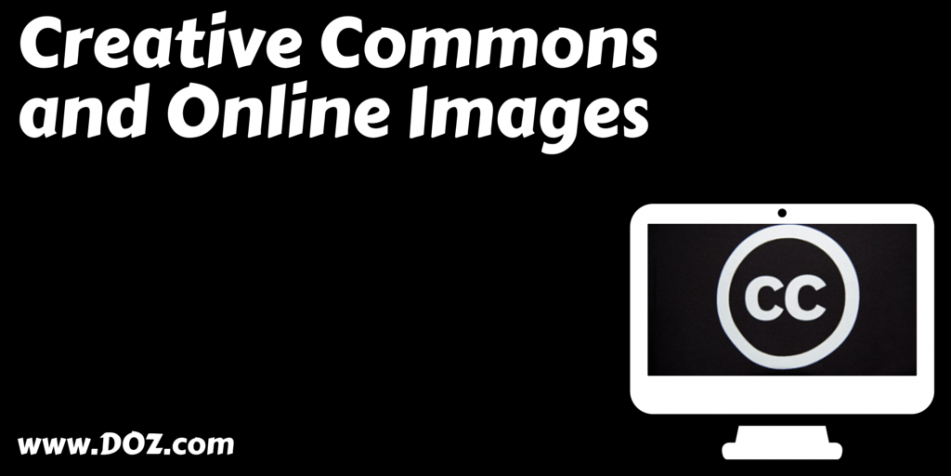You’ve written the perfect blog post or website content piece and now you need to make it look good.
Adding images is a must. Research shows that blog posts with images achieve click-through rates more than 40% higher than text-only posts. And finding images is easy. All you have to do is go to Google Image Search, type in a few keywords and-
Wait. No. Don’t do that.
Taking an image from Google’s image search results is fast, but it can end up costing you in the long run. Most of the images Google or any other search engine have crawled are going to be subject to the protections of copyright. Re-using them without the permission of the rights holder can leave you and your business open to significant penalties, and even legal action. It’s the easiest way to find an image, but it could also be the worst in the long term.
Instead of taking an image from a search engine, then, it’s worthwhile to search for an image you have the absolute right to re-use. And thanks to what is known as Creative Commons, this search doesn’t have to be difficult, especially if you know the right questions to ask.
But what is Creative Commons? And how does it help you to find and use images legally on your website or blog?
In this post we answer those questions, and then lay out four key questions you need answers to in order to find the perfect Creative Commons image.
Introducing Creative Commons
Creative Commons was born of a desire to share images, text, content, and media with others. This had always been possible before, of course, and the Creative Commons movement did not override copyright laws or the fair use doctrine in the United States. Instead the Creative Commons movement aligned itself with the Open Source movement, and proactively moved to make content more shareable.
Creators of content can assign a Creative Commons license to their work that explicitly permits and even encourages others to reprint, reuse, and modify it for their own purposes. Some of this was possible before and remains possible outside of the Creative Commons world. However, it is not quite as easy and certainly not as fast as looking for and using material with the appropriate Creative Commons license.
The ins-and-outs of Creative Commons aren’t that difficult to understand, and the team at Creative Commons have produced a nice video explaining just how it works for creators, and for end users:
In short, using images licensed under the Creative Commons regime is easy, but there are some key questions you’ll need to have answers to before you start looking around for images to make sure you find the right one.
What type of image am I looking for?
Let’s start with the most basic question: what am I looking for?
And no, the answer is not ‘a picture of a smiling person’. Well, not necessarily.
You should start by nailing down what sort of image you are looking for. Is it a photograph or some graphical elements? Do you need an infographic or a chart? Does it need to be large or small? High quality or low quality? Is it something that will be seen by everyone (for example, on a homepage or in a sidebar) or is it only going to appear on a specific blog post?
Different images will help you speak to different readers on your site, and knowing what you are going after before you go looking for those images is going to save you time. Among the most important things to keep in mind at this stage are:
- the purpose the image will serve on the page
- the size of the image
- the nature of the image
Once you have these straight, you can start to think about what you will use it for.
Why do I need the image?
This is less about what you will use the image for on the page and more about whether you’ll be modifying the image or selling something with the image.
If you are going to modify the image you’ll need to select a Creative Commons image that the creator has expressly added a derivative works license to. Modifications can include adjustments of the image in image manipulation software like Photoshop or GIMP, that addition of titles to the image, or cropping of the image to fit a particular template or website need.
Commercial use is also something that is covered by a specific Creative Commons license. If you are selling the image itself, intend to make money by using the image as part of an advertising campaign, or if you have monetized the site that will host the image, you’ll need to make sure that the Creative Commons images you use are licensed for commercial use.
This takes us to the different sort of licenses available.
What Creative Commons license do I need?
In general there are six types of Creative Commons licenses, and here is how Creative Commons explains each one:
- CC BY: “This license lets others distribute, remix, tweak, and build upon your work, even commercially, as long as they credit you for the original creation.”
- CC BY-ND: “This license allows for redistribution, commercial and non-commercial, as long as it is passed along unchanged and in whole, with credit to you.”
- CC BY-NC-SA: “This license lets others remix, tweak, and build upon your work non-commercially, as long as they credit you and license their new creations under the identical terms.”
- CC BY-SA: “This license lets others remix, tweak, and build upon your work even for commercial purposes, as long as they credit you and license their new creations under the identical terms.”
- CC BY-NC: “This license lets others remix, tweak, and build upon your work non-commercially, and although their new works must also acknowledge you and be non-commercial, they don’t have to license their derivative works on the same terms.”
- CC BY-NC-ND: “This license is the most restrictive of our six main licenses, only allowing others to download your works and share them with others as long as they credit you, but they can’t change them in any way or use them commercially.”
There is also a broader license known as Creative Commons Public Domain Mark wherein creators release their work into the public domain. Works released in that manner can be modified, used commercially or non-commercially, and derivative works need not be licensed as public domain works.
What attribution do I need to provide?
In all cases – save for the works in the public domain – you need to attribute the work to the author of the work. The easiest way to do this is to reproduce the original license when using the work on your site. This not only attributes the image to the creator of the image, it also preserves the licensing of the image in case someone else finds the image through your blog post or site at a later date.
Conclusion
Getting images onto your site and into your blog posts is important, but keeping on the right side of the law is important,too. Using Creative Commons licensed images is a fast and easy way to keep everything legal while also maintaining the quality of the images on your site.




15 Comments
20445 166223Wow, cool post. Id like to write like this too – taking time and real effort to make a excellent article but I procrastinate too much and never appear to get started. Thanks though. 83768
826667 871337cool thanks for reis posting! btw are there feeds to your weblog? Id really like to add them to my reader 168039
Sutter Health
It’s the best time to make some plans for the longer term
and it is time to be happy. I have learn this submit and if I may I desire to recommend
you some fascinating issues or advice. Perhaps you can write
subsequent articles relating to this article. I want to read more things about it!
100005 560001hi!,I like your writing so a whole lot! share we communicate far a lot more about your write-up on AOL? I require a specialist on this area to solve my problem. Might be thats you! Searching forward to see you. 159284
Hey there would you mind sharing which blog platform you’re working with?
I’m going to start my own blog soon but I’m having a tough
time making a decision between BlogEngine/Wordpress/B2evolution and Drupal.
The reason I ask is because your design seems different then most blogs and I’m looking for
something completely unique. P.S Apologies for being
off-topic but I had to ask!
546781 235542Id have to talk to you here. Which isnt something Which i do! I really like to reading a post that really should get men and women to feel. Also, thank you for allowing me to comment! 24736
304797 32295I want reading by means of and I conceive this internet site got some really utilitarian stuff on it! . 85450
peaceful music
Trap /Bass Japanese Type Beat 2023
Good post! We will be linking to this particularly great post on our site. Keep up the great writing
This is my first time pay a quick visit at here and i am really happy to read everthing at one place
naturally like your web site however you need to take a look at the spelling on several of your posts.
A number of them are rife with spelling problems and I find it very bothersome to tell the truth on the other hand I will surely come again again.
242838 185717Now im encountering a fresh short troubles Once i cant appear like allowed to sign up for the specific give food to, Now im utilizing search engines like google audience. 467216